The Year Was 2007
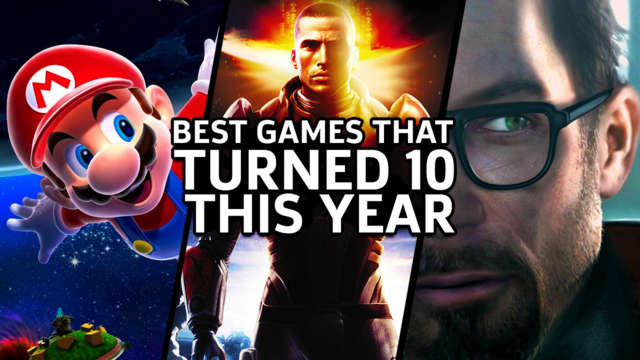
2007 was a year in gaming that many still remember fondly. With the successful launches of several remarkable franchises–including Mass Effect, Uncharted, The Witcher, Bioshock, and many more–this particular year in gaming was a whirlwind of high-quality games that pushed the medium forward. Further more, many of the games of 2007 expanded the gaming community in a big way, propelling interest in videogames even further to the general masses.
GameSpot is taking a look back at some of the more notable games of 2007, and the impact they’ve had in the ten years since their respective releases. While some of these games became the stepping stones for something greater–and others have since fallen into obscurity–the impression they have had is still undeniable, and are worth recognition for their tenth anniversary. Here’s a quick selection of games–in order of their respective releases–that made 2007 a year to remember.
Crackdown — February 20, 2007
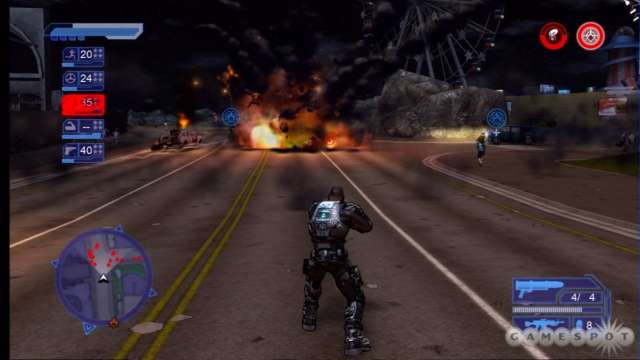
For many, buying Crackdown was a necessary obligation, as Microsoft packaged Halo 3’s much-anticipated beta with the game. But the second I saw Crackdown, I was immediately intrigued: here was what appeared to be a novel twist on the open-world game, one that wasn’t merely trying to mimic GTA. The end result was flawed–driving was terrible, the story was forgettable–but those issues mattered little. Why would you want to drive when you’re a superhero who can run at high speed and jump over buildings (letting you collect orbs, further enhancing your jumping ability and producing one of the all-time great sound effects)? Who needs a story when the ones you’ll create will inevitably be far better?
Even a decade later, I still have have, crystal-clear memories of two moments showcasing the game’s freedom. In a co-op session, my friend wanted to board a tanker full of enemies, but he couldn’t yet jump high enough to get on board. We improvised: He got in a car, and I picked it up and threw it onto the ship, letting him go about his business. Another time, a friend and I took part in a race across the city, which involves scaling huge buildings and bounding from one rooftop to the next. My character was outclassed, and as we neared the final checkpoint, I did the only thing I could: I kicked him. Bear in mind, we were high up in the air and I’m playing someone with super strength, so he went flying off the roof, and I casually strolled to victory.
Even today, Crackdown remains a fun game to return to, as there is little like it (some imitators, like Saints Row IV, aside). That’s only made the wait for the frequently delayed Crackdown 3 all the more difficult to bear.
— Chris Pereira, News Editor
STALKER: Shadow of Chernobyl — March 20, 2007
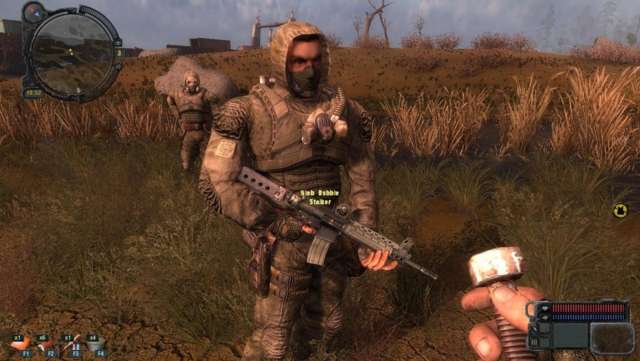
Even in 2017, the FPS-RPG hybrid S.T.A.L.K.E.R.: Shadow of Chernobyl is still a shining example of world building. Atmosphere is a nebulous concept when it comes to games, but STALKER nails down the feeling of scraping by in a dangerous, foreboding world. Dynamic weather effects along with smart sound design, especially when it comes to rainfall and thunder, compound the uncertain nature of trekking across a nuclear wasteland. The X-ray graphics engine also featured dynamic lighting and HDR rendering which, to this day, presents a lifelike environment; lamps illuminate rooms realistically and the sun beams between the breaks in the clouds. Character models and animations definitely show their age, but some of STALKER’s set pieces stand the test of time.
In many ways, STALKER had issues at its foundation with technical performance and difficulty balance. Around its initial release, frequent crashes and unstable framerates hampered the experience, which was cranked up more than you’d expect by the jankiness of a first-person open-world game. NPCs clipping through walls and spawning inside of geometry–sometimes breaking quests–are just a few examples. Difficulty worked in an odd way in that ‘easy’ meant everyone (including you) deals less damage, forcing you to pump already-scarce ammo into enemies.
But underneath the lack of technical refinement is a special game that never held my hand. I created my own approaches to combat; often times I questioned whether or not I should engage at all, akin to an immerse sim. Enemy AI is unpredictable and kept me on my toes, making STALKER suspenseful, but it also threw in survival-horror elements alongside its supernatural themes cohesively. But I found the quieter moments just as valuable, like sitting at a campfire with fellow Stalkers as one of them strummed their acoustic guitar.
— Michael Higham, Tech Editor
Bioshock — August 21, 2007
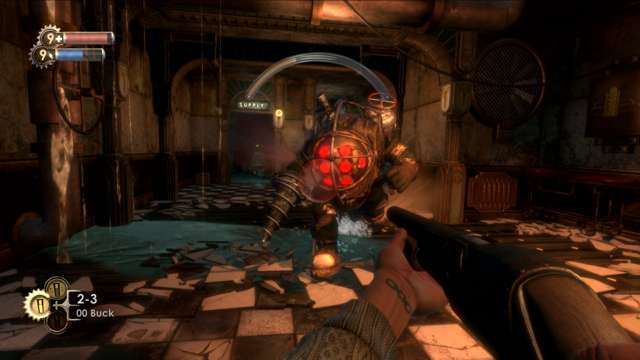
Coming from Irrational Games, the creators of the classic PC Action-RPG System Shock 2, the original Bioshock was a throwback in more ways than one. Releasing in August of 2007, it marked the beginning of several high-profile releases for the end of the year period, and this immersive sim ended up being a rather seminal game for console players. For all its action and scenes of grotesque body-horror, this 1950s art-deco inspired romp made a number of surprising and innovation choices when it came to conveying its richly-detailed attempt at a utopia–as imagined by a mid-20th century industrialist–would look like.
Truth be told, this ended up being one of my first encounters with an immersive sim game–albeit scaled back a bit compared to the developer’s earlier games. I was instantly taken in by the suspenseful and exciting atmosphere of its setting. Added to this were the creative plasmid abilities and the bizarre, jury-rigged weapons scavenged from the environment. It’s not often a game lets you shoot bees out of your hand, and follow up with a shot from your ridiculously modified pistol with a drum barrel attachment.
But above all, I was blown away by the narrative that tied it all together. From listening in on the various audio-logs–which revealed some rather heartbreaking backstories–to witnessing the mad and horrifying musings of deranged artist Sander Cohen, the city of Rapture featured a lot to uncover. The original game was a solid release, and its follow-ups were even better–so it makes me sad to see that the series is now in a state of limbo due to the game studio’s restructure. Still, the effect Bioshock had on me–and it’s incredibly subversive twist–is something I’ll never forget.
— Alessandro Fillari, Editor
Metroid Prime 3: Corruption — August 27, 2007

Retro Studios’ third take on the Metroid series, Metroid Prime 3: Corruption, arrived within the first 10 months of the Wii’s lifecycle, and it served as a proof of concept for the motion controlled console. Prior to the system’s launch, Nintendo had advertised the Wii Remote as the perfect controller for first-person shooters, but the only notable one to release for it up to that point was Ubisoft’s Red Steel, which many fans and critics–myself included–found to be mediocre.
As such, Corruption was the first major showcase for the Wii Remote’s potential for “hardcore” games, and it brilliantly proved how the unorthodox controller could benefit certain genres when used smartly. As much as I loved the first two Metroid Primes, Corruption was a much snappier experience; you could shoot enemies much more quickly and accurately than before thanks to the Wii Remote’s IR pointer. Also, the game made clever use of motion controls by using them to disengage locks on some doors or cast your Grapple Beam and rip shields off of certain enemies.
That wasn’t the extent of Corruption’s innovations. For the first time in the series, players could control Samus’s gunship and use it to travel between different planets or call it in to carpet bomb an area via a special visor. The game also featured some of the most visually stunning environments in a Metroid title to date; I’ll never forget the awe I felt the first time I stepped into the overgrown briar jungles of Bryyo or the floating steampunk city SkyTown. Corruption’s controls were so influential that Nintendo would apply them to both previous Prime games and re-release the entire trilogy in one collection, which still stands as one of my personal favorite game compilations.
— Kevin Knezevic, Associate News Editor
Skate — September 13, 2007
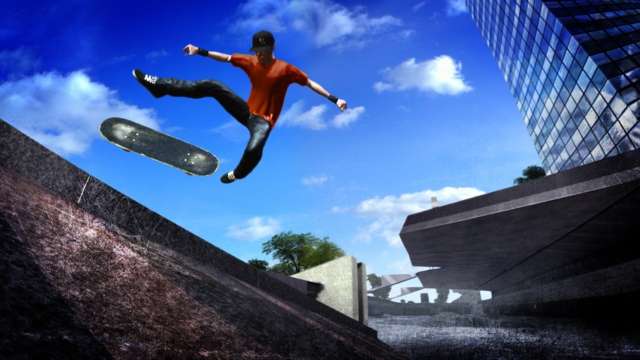
There isn’t a single sports game that captures its respective culture better than Skate has with skateboarding. And as someone who has been obsessed with skateboarding since 1999, I couldn’t have fallen harder for it. While Tony Hawk’s arcade-y gameplay feels more like what would happen if Superman jumped on a board, Skate introduces players to the actual foundation of skating: the repeated tackling of a specific spot until that elusive trick is finally nailed.
Watch any skate video, and you’ll see these monstrous feats performed by seemingly ordinary people who make it look easy. Heck, I can’t tell you how frustrated seven-year-old me got when I realized I had no idea how to do a Benihana. I’d try my hardest to pull off the simplest trick, attempt after attempt after attempt. And that’s what you don’t see in those videos: the dozens and dozens of tries it takes to perfect these tricks.
Skate puts you into the shoes of an actual skater, pushing you to pull off your most daring trick with nothing but your thumbs. There are no stat upgrades, level ups, or higher-grade boards. You get better the same way real skaters do: practice. Mastering Skate’s revolutionary right-analog trick system is something you have to do all on your own and, just like real skateboarding, it’s endlessly rewarding to see your hard work pay off. I can’t even begin to describe the feeling I have when I learn something new, which is still something I experience from time to time as I continue to play the series.
In many ways, it feels like Skate’s ideals come from a different era. Many games at the time and even today make you feel like you’re getting better by giving you a new, cooler-looking way to kill your enemies. However, being in complete control of your board, and knowing you can do anything with it, feels similar to when you’ve mastered Mario and memorized all of his levels. The biggest difference is that you can’t break any of Mario’s bones and get rewarded for doing so. 1-0 Skate.
— Mat Paget, Video Producer
Halo 3 — September 25, 2007
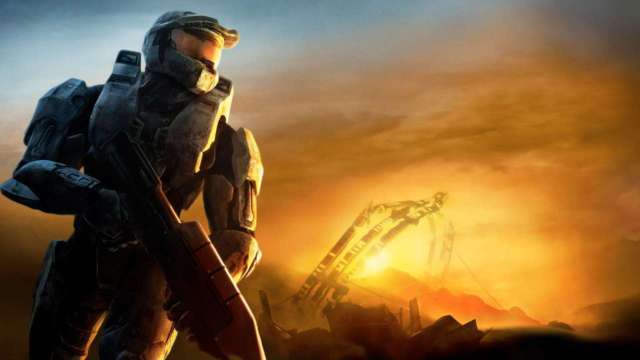
If Halo 2 sparked the existence of Xbox Live, Halo 3 made it a necessity. Bungie’s third game in the revered series was a confluence of seamless matchmaking and remarkable design, and to this date, still one of the best multiplayer titles the medium has produced.
Halo 3 took everything that made its predecessor’s multiplayer excellent, and expanded upon it in every way. Curated playlists attracted millions of players, ranked matchmaking ensured a balanced experience, and new game modes poured out of the customization options available, creating one of the more vibrant multiplayer communities we’ve seen. This all ignores the fact that Halo 3’s maps were stellar, unfolding across industrial landscapes, urban environments, and alien facilities. Halo 3 became the paragon for the multiplayer games that followed.
And while its story is serviceable, it remains one of the series’ weakest. It’s convoluted and self-indulgent, and relies on the franchise’s outside lore far too much. The Master Chief was never the most compelling character to begin with, but in Halo 3, Bungie’s writers wandered in circles before settling on a cliffhanger that never felt earned. In terms of gameplay, though, the campaign’s level design and momentum make up for any of its blemishes elsewhere. Halo 3’s campaign is good, and nothing more.
Many developers today seem attracted to the idea of “games as a service,” creating platforms rather than games, adding incremental features and attractions to sparse foundations. Bungie itself does so with Destiny 2. But 10 years after its incredibly hyped release, Halo 3 is still alive in the form of its Master Chief Collection re-release. Its playlists hum with the sound of players who remember why they fell in love with Bungie’s work to begin with. It’s 2017, but Halo 3 is still proof: that the best way for developers to keep players invested is to make an amazing game.
— Mike Mahardy, Video Producer
Portal — October 9, 2007
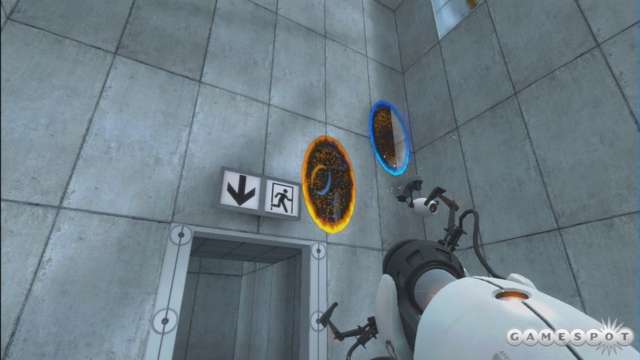
When Valve released the Orange Box back in 2007, the addition of Portal seemed like an interesting, experimental extra that was meant to balance the package’s otherwise big name titles. And while Team Fortress 2 continues to be an important franchise (albeit just on PC), and the hankering for a conclusion to Half-Life still haunts gamers today, Portal was the true blockbuster standout.
Spawning enduring memes, a sequel in Portal 2, and a glut of merchandise (including plushies and mugs), the original Portal holds up today as both a brilliant puzzle game and a hilarious, well-acted comedy. Since it was part of a larger package with other well-known franchises, Portal’s relatively short three-hour runtime didn’t seem like as much of a detriment as it would if the game had been a standalone release. But in hindsight, the game’s length is what makes it such a fine-tuned experience. The game’s challenging puzzles ramp up in difficulty, and it provides a satisfying slice of Half-Life side-story while never outstaying its welcome by dragging the experience down with tedious busywork.
But the performances of Portal’s central character is what make it a modern masterpiece. While you serve as a silent protagonist throughout the game, you’re constantly talked to by The AI construct GLaDOS. Over the course of events, GLaDOS slowly reveals its true intent and personality through both witty dialogue and deadpan delivery. And the game’s ending credits song, “Still Alive” by Jonathan Coulton, rounds out the experience–like the game itself, it’s a humorous earwarm that sticks with you long after you’re done with it.
Ten years later, Portal’s has a strange legacy. Few games have tried to imitate it, and none have approached the same level of enduring popularity or pop culture relevance. And Valve itself only followed up Portal with a single sequel before ignoring the Half-Life mythos entirely. Portal stands alone, an example of concise, carefully constructed design that marries puzzle-solving, clever gameplay mechanics, and hilarity in a way that is still unmatched by any other game.
— Justin Haywald, Managing Editor
Team Fortress 2 — October 10, 2007
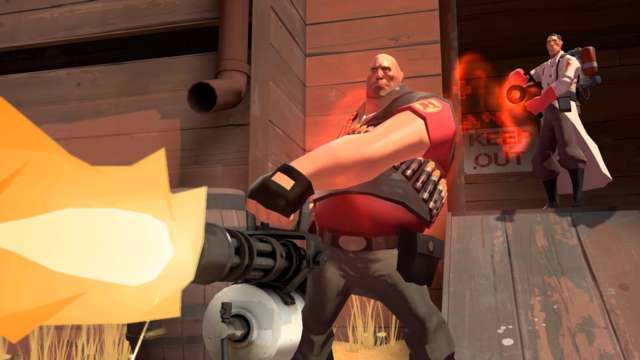
What started as a Quake mod (Team Fortress) evolved into the model example of what a class-based competitive FPS should be. Building off of the popular Half-Life mod in Team Fortress Classic, Valve refined the multiplayer shooter with exceptional map design for both symmetrical and asymmetrical gameplay in objective-based game modes. Many of my Summer and Winter days were dedicated to pushing the payload back-and-forth while keeping a watchful eye for Spies at the iconic 2fort map. I’d lead flag capturing as a Scout, hopping across corridors, furiously dodging Soldier rockets and Demoman grenades only to be met by Engineer turrets around the corner. It was a never-ending game of adapting to enemy tactics and team composition.
The most striking difference with Team Fortress 2 was in its presentation. Instead of using the Half-Life aesthetic as its foundation, TF2 went for a light-hearted, cartoon art-style that exuded personality and breathed life into characters who would’ve otherwise just been avatars for a particular class. This visual approach fed into the gameplay; the expressive and colorful nature allowed you to spend more time assessing situations instead of trying to figure out what’s even happening.
Like many modern multiplayer games that hope to have a long lifespan, changes need to be made aside from balance fixes. Team Fortress 2 went free-to-play in 2011 and introduced microtransactions for cosmetics and equipment. This shift bolstered the player-base and provided major profits for Valve, allowing the game to live on and stay relevant without sacrificing its foundation.
Today, Blizzard’s Overwatch carries the torch for class-based multiplayer shooters, but the seeds were sowed by Team Fortress 2 which is still going strong considering it has been a decade since its launch.
— Michael Higham, Tech Editor
Half-Life 2: Episode Two — October 10, 2007

Fact: we’ve been without a new Half-Life game for ten years. Originally released alongside Team Fortress 2 and Portal, Half-Life 2: Episode Two picked up where the previous part left off, with Gordon and Alyx Vance on the run outside City 17. Since the release of Half-Life 2 in 2004–which was also the first game I played when I purchased a new computer after high-school graduation–it set the bar for storytelling in a single-player FPS, showing that it was possible to balance fast action with a solid and rich narrative. While the concept of the series is simple–a guy in the wrong place at the wrong time being the only hope for humanity–the execution is anything but.
Though the Half-Life series is known for its approach to linear storytelling, Episode Two opened things up a bit with more explorable spaces, along with a handy makeshift vehicle that could over great distances in short time. This installment did a lot of interesting things with the familiar set-pieces and battles that its predecessors pushed forward, and with a cliffhanger ending that teased the intersection of storylines from Portal–a sequel in the form of Episode Three or even Half-Life 3 looked to be an exciting thing. But that follow up never came.
While fans have made certainly made the best of it with creative mods, along with a full remake of Half-Life 1 in Source–which Valve gave their blessing to–reports in the years that followed Episode Two showed that development on the sequel never gained much traction. The one glimmer of hope we all had recently was former-Valve writer Marc Laidlaw releasing a script for one of the proposed games–which fans promptly turned into a playable mod. Still, we’ve now been without a Half-Life game even longer than it took Valve to make HL2. Which is a rather depressing thought.
— Alessandro Fillari, Editor
The Witcher — October 30, 2007
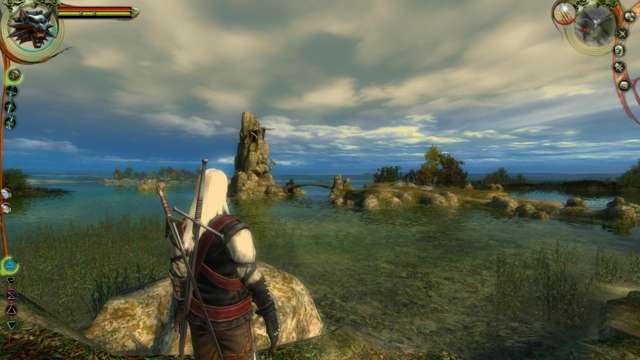
Between titans such as Uncharted: Drake’s Fortune, Call of Duty 4: Modern Warfare, and Mass Effect, a small team in Poland developed an ambitious RPG based on a popular polish book series. The developer set out to make a dark, role-playing adventure that took the atmosphere and grit from the source material, and translate it into a game. That game was The Witcher.
Rather than giving the player the option to role play as a hero or villain, CD Projekt Red presented the player with morally grey choices that led to unforeseen consequences. There is no good vs evil in The Witcher. Sometimes the “right” decision, could be a fatal one. You navigate this world as the famed Witcher–or monster slayer–Geralt of Rivia. As a Witcher, Geralt isn’t supposed to show emotion, intervene in the affairs of humans, elves, and dwarves–and must only keep to himself. But anyone who’s played a Witcher game knows that there are multitudes to Geralt’s personality.
And all of this fed into a twisted, dark fantasy tale that broke conventions and flipped the genre on its head. But more importantly, The Witcher laid the groundwork for CD Projekt Red to continually push their vision and expectations further and further. Now, despite CDPR’s humble beginnings, The Witcher series has become the gold standard for an RPG experience.
— Jake Dekker, Video Producer
Super Mario Galaxy — November 1 (Japan) 12 (US), 2007

Nearly a full 10 years before Mario’s first Switch title, Super Mario Odyssey, took players on a globetrotting adventure to some of the strangest locales in the series’ history, Mario boldly went where no other plumber had gone before in Super Mario Galaxy. Expectations typically run high with the release of any Mario game, but Galaxy in particular had a lot to prove to me when it debuted back in 2007. Not only was it the first Mario title to launch for what was at the time Nintendo’s latest console, the Wii, it was also the plumber’s first 3D adventure since Super Mario Sunshine–a fun game that I ultimately thought was disappointing compared to the groundbreaking Super Mario 64.
Despite the lofty expectations it faced, Galaxy would quickly become another classic Mario adventure and mark the beginning of a veritable renaissance for the series. Rather than following the sandbox-style approach of Mario 64 and Mario Sunshine, Galaxy pared back its levels to more linear platforming challenges, affording the developers greater control over the pace and flow of the adventure. And they certainly took advantage of it, crafting a breathlessly creative series of challenges that surprised and delighted me at every turn. New Galaxies and objectives would open up at a rapid pace, and the game introduced and discarded gameplay ideas so frequently that it never had a chance to grow stale.
The game’s sequel, Super Mario Galaxy 2, would arrive three years later and further refine the gameplay ideas it introduced, but the first remains my personal favorite because of how it continually surprised me and laid the foundation for all future 3D Mario games. That traces of it could still be felt in some of Odyssey’s levels and challenges further illustrates just how influential Super Mario Galaxy was to the series and why it remains one of the best titles Nintendo has ever released.
— Kevin Knezevic, Associate News Editor
Call Of Duty 4: Modern Warfare — November 5, 2007
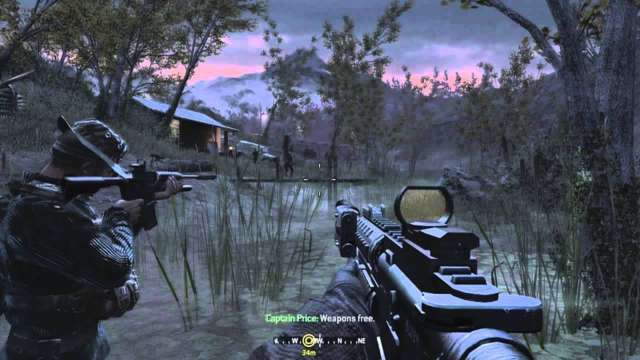
When it came out in 2007, Call of Duty 4: Modern Warfare marked the blockbuster series’ first foray out of WWII and into a contemporary setting–and the first shooter I’d ever played that took place in the present, inspired by a war that was currently being fought.
While the campaign was still bombastic action-movie fare, it had (and still has) some of the most memorable and impactful moments in the series. The opening credits, in which you, the president of an ambiguous Middle Eastern country, witness a coup d’etat as you’re driven to your execution was a haunting introduction to the game’s conflict. The nuclear explosion in Shock and Awe and the short death sequence in the following mission, Aftermath, took me out of the power fantasy and forced me to face the futility of war. And All Ghillied Up and Mile High Club remain two standout FPS missions for their level design and total change of pace from the rest of the campaign.
Modern Warfare also moved multiplayer forward, introducing the now-standard Create-a-Class. Being able to customize a loadout, coupled with the new perks system, redefined multiplayer for the series and inspired many other games to come.
— Kallie Plagge, Associate Editor
Crysis — November 15, 2007
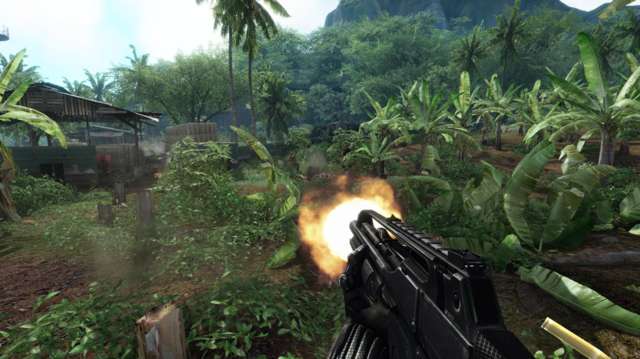
Back in the 2000s, PC Gaming had gone through a significant resurgence. With games like Half-Life 2 and World of Warcraft offering players rich experiences that pushed their genres forward, there were also other titles that put the average PC gamer’s rig through its paces. Crysis was released on November 13 2007, and it would eventually go on to become the benchmark for PC performance at the time. In 2007, my PC was mostly built for games like Half-Life 2 (three years old at this point), so seeing videos of Crysis running at max settings was a sight to behold, and it had me wondering if I would be able to experience the game.
Crysis is a standard shooter putting you in the shoes of a super-soldier who could single-handedly take down an opposing army and alien invaders. The main setup and story is unremarkable and cliche, but what it did do well was mixing linear storytelling with an open-ended mission design in a lush jungle setting. While the story took itself seriously, the gameplay often revelled in goofy action, allowing you throw chickens with maximum strength, to even strange an enemy soldier with one hand and firing a rifle with the other.
Playing Crysis for myself was somewhat of a mixed experienced, as my rig struggled to run it at medium to low settings with several FPS drops throughout. Still, I was blown away by the game, and it still stands out an incredibly solid and varied shooter. While Crysis is no longer the PC benchmark–and its two sequels fell short of matching the original–Crysis is still a solid shooter that manages to impress with its visuals to this day. It also made me more aware of general PC upkeep, which is always important.
— Alessandro Fillari, Editor
Assassin’s Creed — November 16, 2007
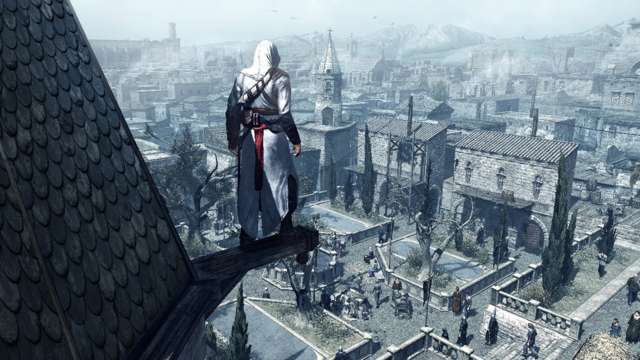
I’ll always remember the first Assassin’s Creed trailer: a mysterious hooded assassin running through a busy crowd and jumping onto an unsuspecting evildoer to stab him with a hidden blade. These elements would go on to define the series, but in that moment in time, it was all so fresh and new. From its distinct setting and time period to its crowd-based stealth mechanics and free-running maneuvers, the first Assassin’s Creed exuded a design philosophy that was innovative and different from most contemporary action-adventure games of the time. And the surprises didn’t stop. People widely assumed that Assassin’s Creed was strictly a period-piece, but when the game first released, it was revealed there was actually a modern-day component to its narrative.
As a game, Assassin’s Creed was unable to truly live up to the high expectations set by its ambitious ideas. Its overtly bland main protagonist and repetitive mission structure often brought the game down. However, its conspiracy laden plot, its authentic recreation of a historical era, and the allure of the Animus as a device that could explore the memories of a person’s ancestors were fascinating elements that still remain with series.
While the first Assassin’s Creed may not be my favorite in the series, it’s difficult to deny how exciting of a beginning it was to the then fledgling franchise. In many ways, Assassin’s Creed set the tone for the seventh console generation, pushing the level of interactivity you could have in a game with not only the environment but the characters encounter. To be able to climb any building in the world, evade enemies in plain sight, and explore an era barely touched upon in games was a jaw-dropping experience. Ten years later, the first Assassin’s Creed is still an impressive display of creative ambition that’s well worth looking back at, despite the stronger execution of its subsequent entries.
— Matt Espineli, Associate Editor
Uncharted: Drake’s Fortune — November 19, 2007
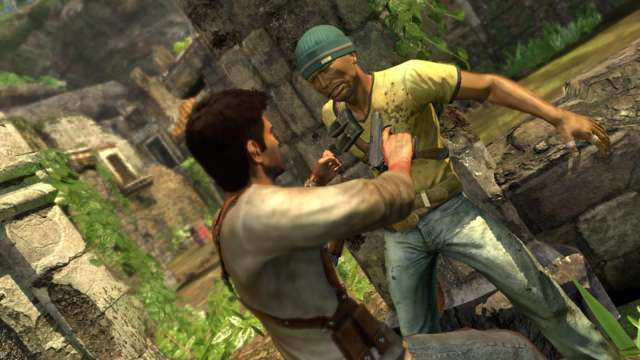
As a PlayStation first party developer making a transition to the PlayStation 3, Naughty Dog left behind the cartoony aesthetic of its PS2-era Jak and Daxter series to a new richer-looking franchise for Sony’s third console. Their answer was Uncharted: Drake’s Fortune, a Tomb Raider-inspired adventure that strove to package engaging gunplay, exploration, and puzzle solving in one cinematic escapade. While all those elements were seldom delivered in equal measure in the series’ 10-year history, it established Uncharted as the best Sony exclusive series of the past decade.
Uncharted improved upon early 21st century gaming trends, particularly the rise of cover-based shooting, innovated by Kill.Switch and popularized by Gears of War. This type of combat was well-suited in capturing countless pulse-racing moments its protagonist, Nathan Drake faced. Whether hiding behind a column or a low wall, the player connected to Drake’s precarious situations. His less than confident here-goes-nothing approach to harrowing predicaments was emblematic of the late 2000s wave of everyman heroes that dotted the story-driven gaming landscape.
Although I had missed Uncharted: Drake’s Fortune the year it released, I discovered its greatness in anticipation of the release of Uncharted 2: Among Thieves. As a lover of the cinematic qualities of narrative-driven games, I had the strong drive to play each of those games in single sittings. These aren’t essential ways to play those games, but such playthroughs allow the player to appreciate the well-crafted and cohesive movie-like flow of Nathan Drake’s treasure quests. By the time Uncharted 4 came out, I was content beating that epic adventure in multiple sittings, which you can say speaks to how the series had long since transcended the film medium that so heavily inspired it.
— Miguel Concepcion, Editor
Mass Effect — November 20, 2007
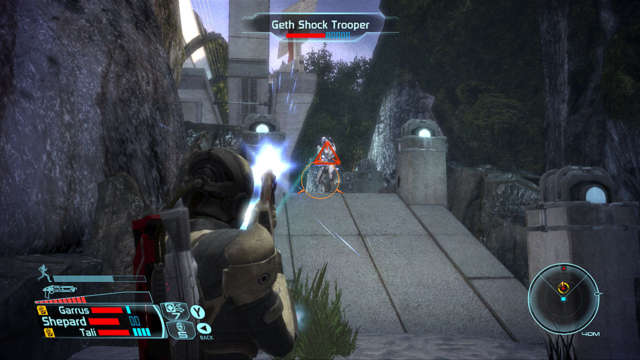
2017 has been a rough year for the Mass Effect franchise with the disastrous launch of Andromeda being the butt of many jokes. Its initial goal was a noble one, looking to the first game’s unique ideas for inspiration. That’s why now more than ever, it’s important to look back on what the original game did ten years ago.
As the introduction to the expansive Mass Effect universe, BioWare created a world filled with loveable characters and plenty of detail. The game’s Codex functioned as an in-game encyclopedia letting dedicated players learn everything about the Milky Way’s many planets and species. The core of it though is a fun sci-fi adventure, where as Commander Shepard, you get to make meaningful choices that not only affect the story, but the story in future games to follow. This commitment to player choice along with the creation of the now ubiquitous dialogue wheel, is probably Mass Effect’s most lasting legacy for many other RPGs and story based games. For BioWare, it represented a new era of cinematic RPGs. The dynamic camera angles and facial detail brought, for the time, an unseen level of quality to the game’s presentation.
Many aspects of Mass Effect have aged poorly such as the weak combat, and its beautiful but empty collection planets. While its sequels’ with their improved combat and design are arguably better games, it’s the original’s ambitious attempt to create an explorable galaxy that still in many ways hasn’t been matched and maybe one day a game will realize that vision.
— Jean-Luc Seipke, Video Producer
Rock Band — November 20, 2007

In 2007, peripheral-based rhythm games were starting to experience massive success in the West thanks to developer Harmonix’s Guitar Hero series. The genre was initially more popular in Japan, but Harmonix’s work allowed it to gain a wider reach in Western markets. While the company garnered massive success with Guitar Hero, it wasn’t until its work on Rock Band where it reached greatness.
On the surface, Rock Band felt like a simple collection of established ideas, copying and pasting the timing-based mechanics of other peripheral-based rhythm games into single cooperative experience. But the way the game elegantly brought together each of its disparate parts made it so much more than what came before. By virtue of its premise, the game was undeniably alluring. After all, who didn’t want to feel like they were playing in a rock band? The game allowed you the opportunity to feel like you were in a live band, playing together in (at times) perfect sync.
When Rock Band first released, it became the pillar of every party I went to during that year. Hours upon hours were spent jamming out with the game’s array of plastic instruments, with eyes transfixed on the incoming notes down instrument lanes. Vocal cords were worn down, as the mic was traded between players from song to song. When Rock Band was in the room, it didn’t matter if you played games or not, everyone wanted to be a part of the experience. And with how easy to pick up it was, there were often little boundaries to overcome to get enjoyment out of singing or playing guitar, bass, and drums. Rock Band possessed universal appeal, easily bridging the gap between casual and hardcore players.
Unfortunately, the rhythm game phenomenon that spurred from Rock Band’s success eventually ended. With the oversaturation of rhythm games in the market, the series declined in popularity not long after the release of its third entry. However, the Rock Band series has since maintained a cult following. In fact, a Rock Band 4 was eventually released in 2015. While its latest entry received lukewarm reception, Harmonix continues to support the community, continually releasing DLC songs to this day.
— Matt Espineli, Associate Editor
